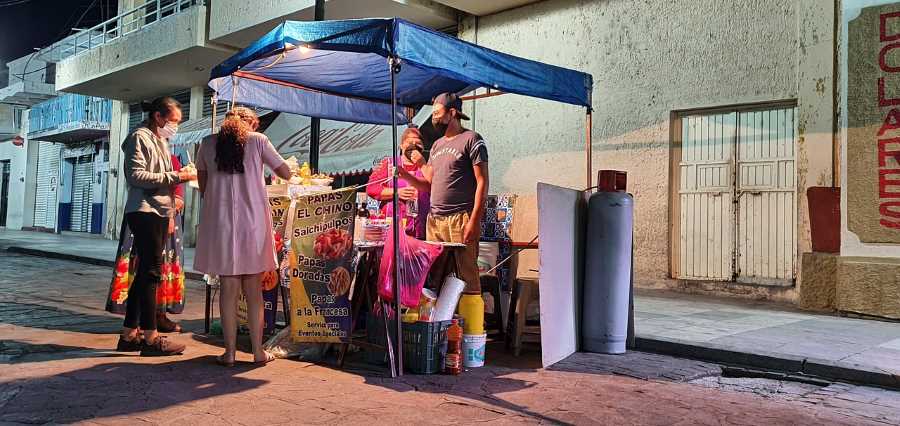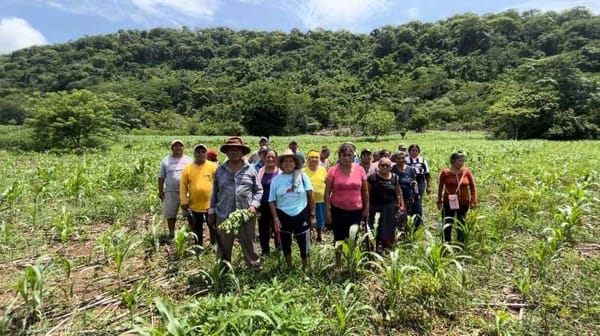How Middle-Income Areas Redefine the Street Food Scene
Findings from Arizona State's Chavez reveal Mexico City's street food hub is in middle-income areas, challenging norms. Tacos mingle with prosperity, as research uncovers a culinary odyssey with health implications. A global taste-test awaits in Phoenix and Navajo.

In a city known for its vibrant culture, rich history, and spicy cuisine, the bustling streets of Mexico City have more to offer than just colorful murals and mariachi music. A recent study conducted by the adventurous Professor Jose-Benito Rosales Chavez from Arizona State University has uncovered some spicy revelations about the street food scene in the Mexican capital.
Contrary to popular belief, these culinary havens aren't just scattered in low-income neighborhoods. Professor Rosales Chavez, armed with a taco in one hand and a notepad in the other, embarked on a gastronomic journey through the streets of Mexico City. His findings, presented in the Journal of Nutrition Education and Behavior, have given us a taste of the city's eclectic street food landscape.
Taco Trucks and Tortillerías
Forget what you thought you knew about street food. According to the professor's research, a whopping 38.1 percent of street stalls are dedicated to freshly prepared delights. Move over fast food, there's a new contender in town, and it's wrapped in a tortilla.
Surprisingly, these culinary hotspots are not confined to the expected low-income areas. The study reveals that the majority of street stalls set up shop in middle-income neighborhoods, proving that good food knows no economic boundaries. It seems the stereotype of street food being exclusive to the humblest corners of the city is about as accurate as predicting the spiciness of a chili pepper by its color.
Armed with a keen sense of adventure, the researchers combed through 391 stalls, uncovering a tapestry of flavors and aromas. The distribution of these hidden gems is closer to homes, often disguised as a seamless blend of living spaces and workplaces. Forget about food courts in shopping malls; in Mexico City, it's all about curbside feasts.
Transportation centers and work hubs also play host to these culinary delights, creating a citywide mosaic of tantalizing treats. The researchers, led by Professor Rosales Chavez, emphasized that this study is a rare peek into the world of street food. A topic that is frequently overlooked in the United States due to a lack of context for this unique type of business.

Beyond Tacos and Tamales
As the aroma of sizzling tacos wafts through the air, the professor proposes a spicy solution to a healthier diet: increase the supply of unprocessed foods. In a city brimming with tortillerías, grocery stores, and markets, there's untapped potential to make healthier choices more accessible.
The research, part of Rosales Chavez's doctoral journey, is now expanding its horizons. A cross-border comparison is in the works, with Mexico City's street food scene going head-to-head with Phoenix, Arizona, and the Navajo community in the United States. The Fogarty International Center of the National Institute of Health is sponsoring this culinary showdown, promising to unravel more savory secrets about the global street food phenomenon.
As the study continues to dig into the health implications of street food and its connection to chronic diseases, we're left salivating for the next chapter of this culinary escapade. Will traditional retailers in Mexico City be the key to a healthier, unprocessed future? Only time will tell.
In a world where food trucks are more than just a trend and street food is a cultural touchstone, Professor Rosales Chavez and his team are serving up a fresh perspective on the flavors that define Mexico City. So, grab your sombrero and join the feast – because when it comes to street food in Mexico City, the journey is just as delicious as the destination.




